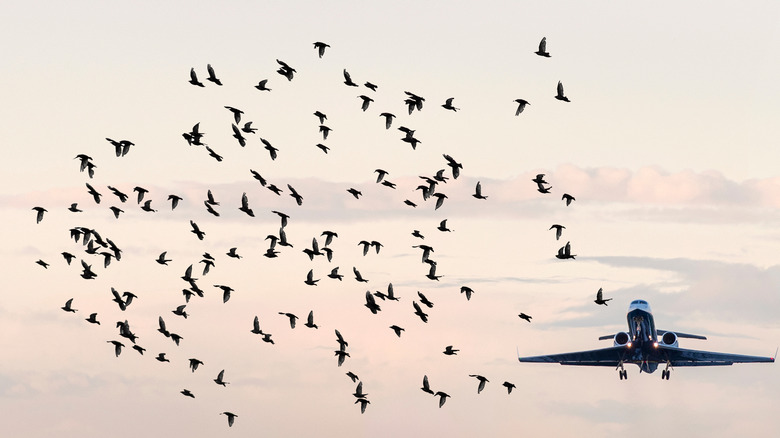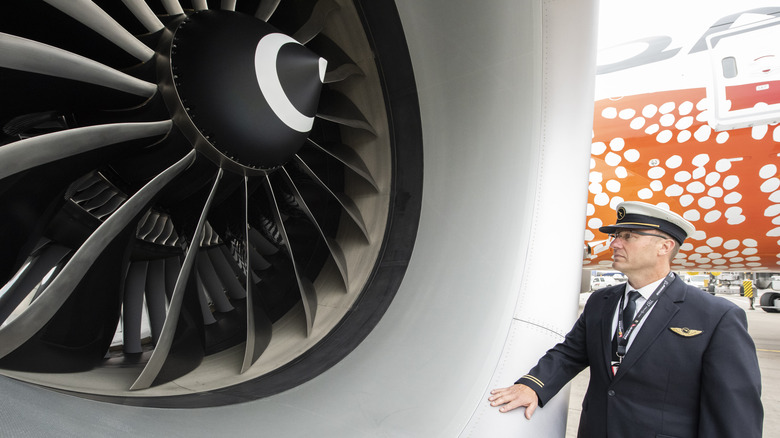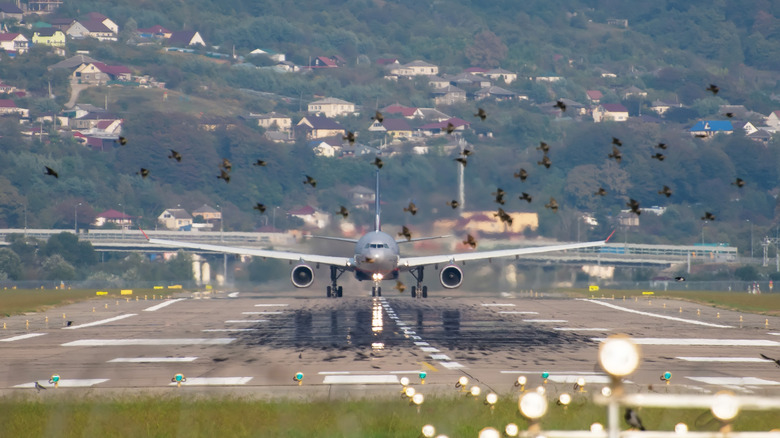What Happens When A Bird Hits A Plane Engine And Why You Shouldn't Worry
In 2009, US Airways Flight 1549 took off from LaGuardia heading to Charlotte. At take-off, Airbus A320 hit a flock of Canadian geese and lost power to both engines. Captain Chesley Sullenberger, known as Sully, initially asked to return to LaGuardia but soon realized the aircraft couldn't make it back, quickly deciding to make an emergency landing on the Hudson River.
After passing over the George Washington Bridge at just 900 feet, the aircraft made an unpowered water landing, and passengers made their way onto the wings and emergency slides. After 24 minutes, all 150 passengers and the five crew members had evacuated the plane unharmed.
Known as the "Miracle on the Hudson," the incident captured the world's attention, spurring tons of media attention, documentaries, and a full-length movie starring Tom Hanks. Although a feel-good story, many of us had one burning question that remained unresolved: Birds ... birds crashed the plane? Yes, and birds can and do cause damage to aircraft, but you really shouldn't worry about a bird-related incident when flying.
Bird strikes can cause engine failure
While bird strikes don't pose a significant risk, the Miracle on the Hudson incident shows that the risk isn't non-existent. Most bird strikes occur at lower altitudes, or during the takeoff or landing phase of a flight. According to the Pilot Institute, only 3% of bird strikes in the U.S. occur while cruising. This isn't necessarily great news, but flights are at their slowest speeds during takeoff and landing, helping to mitigate risk a little.
Almost all bird strikes impact the front-facing areas of the plane, because, you know, physics. This can cause damage to the windscreen, nose, and the engines. While damage to the nose and windscreen can cause a flight to be diverted, the biggest risk to flight safety is unsurprisingly damage to the engines.
Jet engines are incredibly powerful but also delicate due to engineering precision. The only things that should go through a plane's engine are air and fuel. Needless to say, a bird can destroy the rotary blades and cause an airflow reversal. When a bird goes through an engine, it's known as jet engine ingestion, which can cause the engine to fail completely. While all this sounds rather catastrophic, bird strikes still aren't something to lose inflight sleep over.
Bird strikes are rarely dangerous but not rare
Birds can cause engine failure, but most modern aircraft are highly capable of flying on one engine. Of course, while not ideal, an airplane can easily divert to the nearest airport using one engine. An incident of dual engine failure, such as the case of US Airways Flight 1549, is incredibly rare.
Although the rotary parts of a jet engine are delicate, all commercial jet engines must comply with "bird ingestion" regulations set by the U.S. Federal Aviation Administration (FAA) and the European Aviation Safety Agency (EASA). While it may sound a bit strange, engine companies must actually demonstrate small, medium, and large bird ingestion at takeoff power to regulatory bodies. In other words, these engines must retain a level of performance after ingesting a bird.
While bird strikes are rarely dangerous, they aren't exactly rare. According to the Federal Aviation Administration (FAA), there were over 17,000 reported wildlife strikes in 2019 alone. However, the FAA has only attributed 292 human fatalities to wildlife strikes globally from 1988 to 2019. Considering the billions of passengers who've flown over this 31-year period, we'll take our chances.


